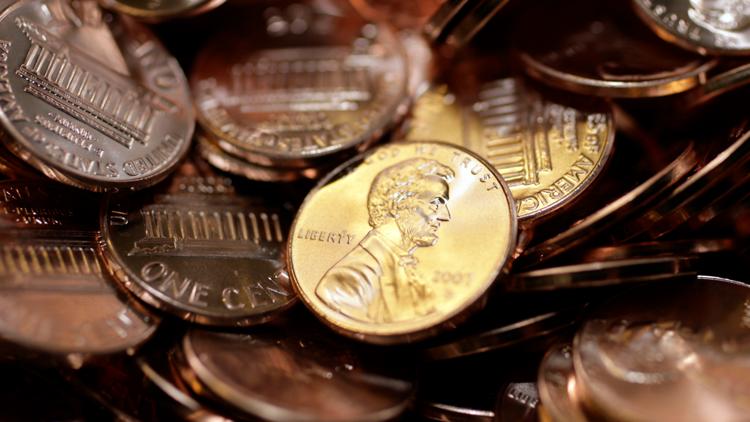
Customers say some stores are already rounding prices up to the nearest dollar or ten cents, or down to the nearest five cents.
SAN FRANCISCO — Stores across the country are asking for exact change months after the U.S. Treasury Department announced they’d soon stop making pennies.
Customers say some stores are already rounding prices up to the nearest dollar or ten cents, or down to the nearest five cents.
The Trump administration decided to stop making the 1-cent coin earlier this year because the cost of making pennies has increased markedly, by upward of 20% in 2024, according to the Treasury.
By stopping the penny’s production, the Treasury expects an immediate annual savings of $56 million in reduced material costs, an official told the Associated Press in May.
Kroger and Home Depot are among nationwide retailers impacted by the penny shortage, according to USA Today.
Some Kroger locations in Ohio have already put up signs requesting exact change.
“The U.S. Treasury has stopped production of pennies, which is now impacting supply,” the message posted to checkout lines reads. “If using cash for payment, please consider providing exact change.”
Steve Goode, executive director of the Arkansas Retail Association, said stores across the state are already feeling the impact of the 1-cent no longer being made.
“We’ve got some that are choosing to go ahead and round down, if it’s ones and twos, if the cents is a penny or two cents, or if it’s a six or seven, they’re rounding down to the dime or to the nearest nickel. Then if it’s three and four, they’re rounding up, or eight and nine, they’re rounding up to the next nickel or dime,” he said.
Kwik Trip and Kwik Star, a chain of convenience stores across Wisconsin, Minnesota, northern Michigan, Iowa, Illinois and South Dakota, have also made the change to round cash payments.
“This change reflects our ongoing focus on guest experience. We apologize for any confusion this may create for our guests,” Scott Zietlow, CEO and President of Kwik Trip, told FOX6 Milwaukee.
Cash payments will be rounded, but credit card payments will not be. For example, if someone spent $3.32 on a candy bar, they would only need to pay $3.30 in cash but the full amount with card.
Not all states have this option though, prompting the Retail Industry Leaders Association to push for a national law allowing businesses to round cash transactions to the nearest nickel.
“Retailers are growing concerned that the penny shortage will adversely impact operations as we enter the busiest stretch of the shopping season,” Austen Jensen, RILA Senior Executive Vice President for government affairs, wrote in a statement.
Are pennies still good to use?
Yes, pennies are still legal tender. Businesses encourage those paying with cash to use pennies to get them back into circulation.
How much does it cost to make a penny?
Coin production costs vary thanks to different raw metals used, complexity of their designs, labor needed and more. Many of those expenses have been on the rise — and the penny isn’t the only coin entering our wallets today that costs more to make than it’s worth. See below:
- Penny | 4 cents — or $0.0369
- Nickel | 14 cents ($0.1378)
- Dime | 6 cents ($0.0576)
- Quarter | 15 cents ($0.1468)
- 1 and 2 Dollars | 3.2 cents each

